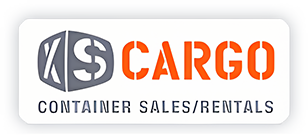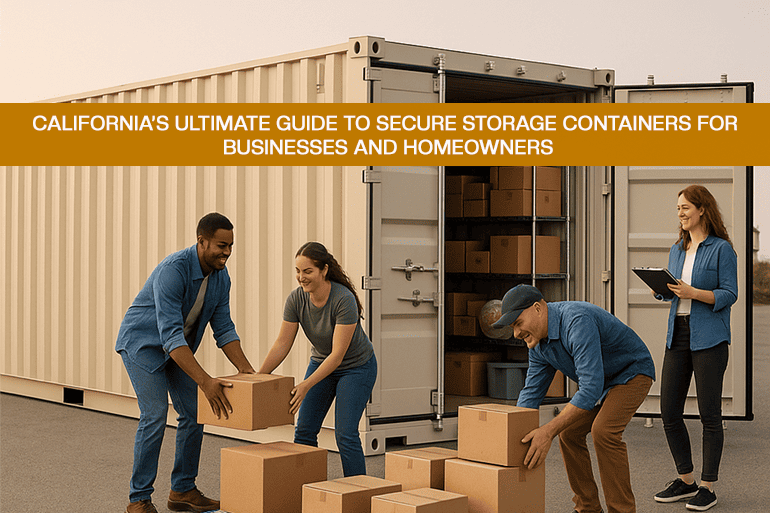Choosing between buying or renting a shipping container — and picking the right size — is one of the first decisions for anyone in California needing secure on-site storage, a conversion project, or a cost-effective workspace. This guide walks you through the buy vs rent tradeoffs, explains the practical differences between 20-foot, 40-foot, and high-cube containers, decodes container condition grades (new vs used, cargo-worthy, wind & watertight), and gives California-specific tips on delivery, typical price ranges, and when a modification (insulation, roll-up door, HVAC) makes sense. By the end you’ll have the questions to ask suppliers, a quick cost checklist, and the confidence to pick the best container for your project in CA.
1) Buy vs Rent — which makes sense in California?
- Buy when you need long-term storage, are planning a conversion (office, studio, retail), or want resale value. Buying is usually cheaper over many months/years than renting and gives full control for modifications.
- Rent when you need short-term storage, seasonal space, or don’t want to handle delivery/maintenance logistics. Rentals are convenient for construction projects, events, or temporary on-site storage where flexibility matters.
Why price horizon matters: A basic rule: if you’ll use the container for more than ~12–18 months, buying often becomes more economical than renting (exact break-even depends on local delivery and transport costs). Typical used 20′ containers in the current market commonly range in the low thousands, while rental rates will vary by region and season.
2) Size & dimensions: 20′ vs 40′ vs High-Cube (what fits your needs?)
- 20-foot (20′) — compact, easier to deliver to tighter city lots, often used for household storage and small conversions. Standard external length ~20 ft; tare weight ~2,300 kg, max gross in shipping terms ~28,000 kg (payload varies by manufacturer).
- 40-foot (40′) — doubles usable floor area, best for larger conversions or on-site storage needs; standard interior and exterior dimensions differ by manufacturer but expect roughly 40 ft length and about 8 ft width. 40′ units have higher tare and gross weight.
- High-Cube — same footprint as standard 40′ but ~1 foot taller (extra headroom for racking, offices, larger equipment). If you’re converting a container into an office, studio, or retail unit in California, a high-cube is frequently a better option because of the additional vertical space.
3) Condition grades — what to expect when you buy used
Containers are sold in common grades: New / One-Trip, Cargo-Worthy (used), Wind & Watertight (WWT), and As-Is. Cargo-worthy has passed an inspection for seaworthiness; WWT is suitable for dry storage but may show cosmetic wear. For conversions you’ll usually want at least WWT or cargo-worthy; for outdoor household storage, “WWT” is often adequate and cheaper. Always confirm the seller’s grading definitions and request photos/inspection reports.
4) Typical price ranges
- Used 20′ — many market guides show typical prices between roughly $1,500–$4,000 depending on condition, local supply, and season. New or one-trip 20′ containers commonly run higher.
- 40′ — used 40′ units are higher (commonly several thousand dollars). Conversion or modified containers (insulation, windows, HVAC) add cost — modest office conversions commonly begin in the low thousands and can climb depending on finish level.
Note on regional variability: California’s West Coast location and seasonal demand can push prices up during busy import seasons; freight rates and supply chain dynamics also affect availability and price. For transport inside California, delivery/haulage charges can be a large fraction of final cost.
5) Delivery, site prep & access considerations (quick checklist)
- Confirm truck access and turning radius on your property; 40′ + high-cube units need more clearance than 20′.
- Provide a level, firm base (compacted gravel or concrete pads recommended) to avoid settlement.
- Verify local permits or HOA restrictions (some cities allow temporary placement without permit; permanent conversions or long-term placement often require building or temporary use permits). See local Santa Barbara guidance on temporary uses and oversized vehicle street permits for examples.
6) When to modify vs buy purpose-built (and common mods)
- Modify if you want a custom office, retail pop-up, or insulated storage — common mods: insulation, HVAC, electrical, windows/doors, roll-up doors, shelving, and flooring. Mod cost ranges are wide — a basic office conversion may start in the low thousands; full interior build-outs can be much more.
7) Quick buying checklist (printable — keep with you when shopping)
- Confirm container size & dimensions.
- Ask for condition grade & inspection report.
- Get written delivery quote (truck access, crane or tilt-bed needs, permits).
- Note warranty/return policy.
- If converting for occupancy, confirm local building codes and whether a building permit/inspection is required.


Leave A Comment